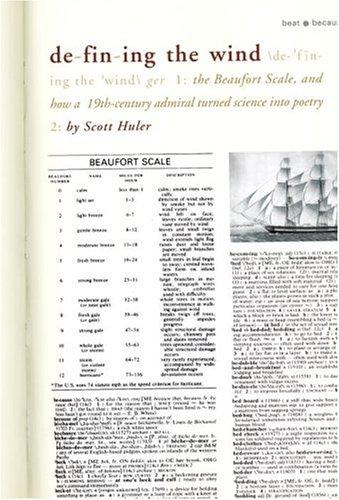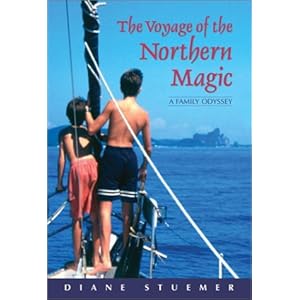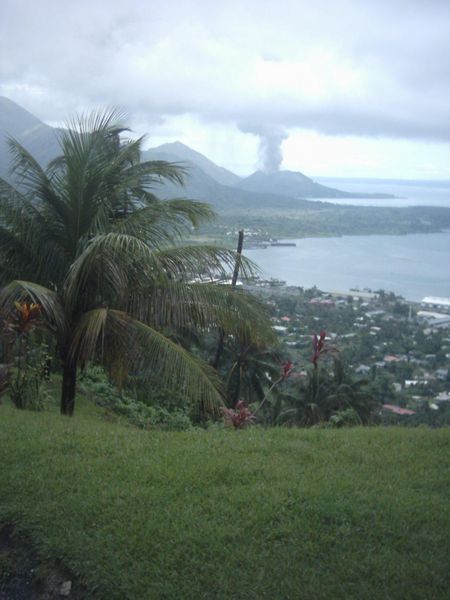Changing Course: A Woman's Guide to Choosing the
Cruising Life
by Debra Ann Cantrell
$20.95, 192 pp.
by Debra Ann Cantrell
$20.95, 192 pp.
ISBN:0071427899
This slim volume, which came recommended
to me and has continued to get mention since its 2004 publication, might be one of the most important reads the husband portion of a
cruising couple could purchase. The cruising women I’ve read about, like Ellen MacArthur, Beryl Smeeton and Tania Aebi,
have tended toward the brusquely efficient, stiff-upper-lip types. Which is all
well and good, I suppose, but that’s not most sailing husbands, is it, never
mind their perhaps less-enthusiastic wives.
Now, given that’s it aimed squarely at
women, that comment might seem counter-intuitive. Well, so are most male
sailors, in my experience. Men like systems, fixing things, getting places. So
do a lot of women, but they tend to want to discuss the ramifications first.
Men, generally, can have a little trouble in this department.
That ‘little trouble’ is the subject of
this interesting book, and if you like it, there's an interesting website as well. Many men of a certain age and a nautical cast of mind
decide to go cruising, and many a Caribbean bar features these now-divorced
skippers who didn’t quite take into account what selling up and sailing would
mean to their spouses. Although Debra Cantrell’s study, and this is a study,
assumes that it’s men who propose and women who dispose with the cruising life,
much of this book is applicable to any pair, gay, straight or otherwise undefined shipmates, where one seeks a life-altering
adventure and the other doesn’t…at least at first. In that sense, it's kin to the unfortunately obscure Two in a Boat, which I favourably reviewed below.
Despite the anecdotal approach, this is
essentially a social survey of how women cope with their husband’s determination to
cruise. When a woman who has spent years building a career, making a home,
raising kids and forming strong local relationship hears that her beloved Skipper wants
to bugger off to Margaritaville…well, it can create stresses. Cantrell
charts her own course from, roughly, total opposition, fear and loathing to
acceptance and finally, well-seasoned enjoyment. This course allowed for speaking
with other women in the cruising life, many of whom were not (at first)
remotely gung ho about the idea. and others who found it was the first step in
an eventual marital breakdown. The briefest of chats with boat club bar staff will confirm this, alas. Boats and marriages founder when the crew is not in accord.
This isn’t a “downer” book at all,
however. Few men are Captain Blighs of the under-40 foot class, but few
seem to understand on an emotional level what it means to trade a Leaside three-bedroom
for a dimly lit V-berth and the joys of ill-secured holding tanks. Such men should read
this book avidly if they have any plans to sail off with the spouse.
Among the
common sense suggestions are the one to keep the house and rent it out, except for one
room, as a paid-off house will provide both storage space, cruising income and
a place to sack out on occasional trips back. I like this so much I've set that process in motion with tenants already in the upper two floors.
Another suggestion was that wives and husbands should
maintain a “boat” account, and separate accounts for themselves, so that
neither has veto power over perceived “luxuries” (or the least concessions to a civilized life,
take your pick). This means in practical terms that either skipper can bail in a hurry, as there’s nothing more nasty
than being trapped on a boat with no means of leaving it at the next port. As
Cantrell points out, if you aren’t on the same page regarding what constitute
reasonable expenditures, why go sailing? Camping is cheaper and frequently less
damp and you can stretch your legs until you get to a nice pooping tree.
Women are strongly encouraged in this
book to take sailing lessons, diesel repair lessons, navigation courses and the like. That’s
because it’s better and safer to have two sailors aboard, but also because
knowing this salty arcana means women (and non-sailing husbands of female skippers)
can gain confidence and enjoyment out of doing things, and can perceive why their
husbands wanted to go in the first place with "the skipper eye".. Cantrell admits that while a few
women who went sailing hated it even after gaining the experience, there are a
roughly equal number who overcame initial fears and concern and are now keenest
on keeping cruising.












